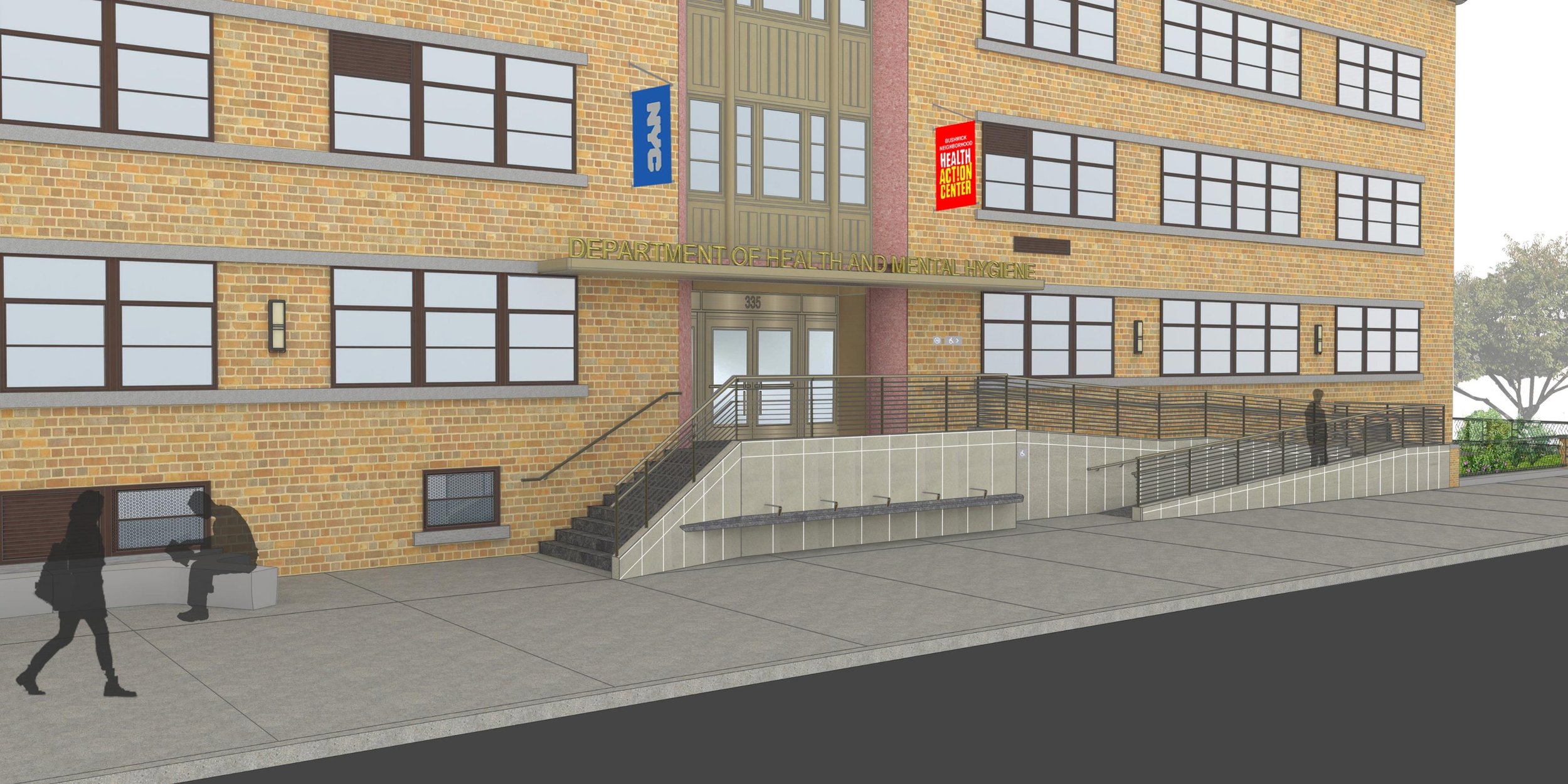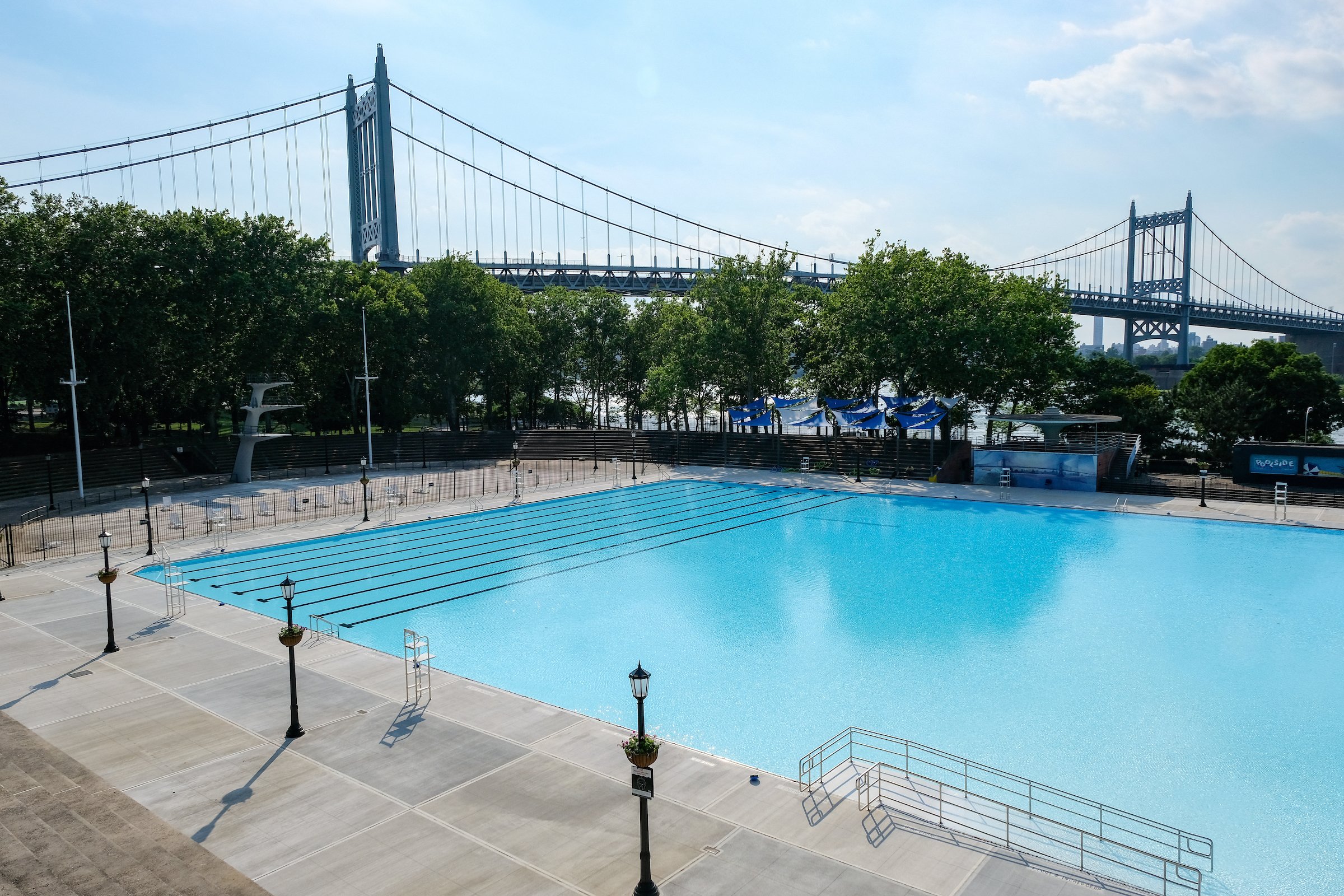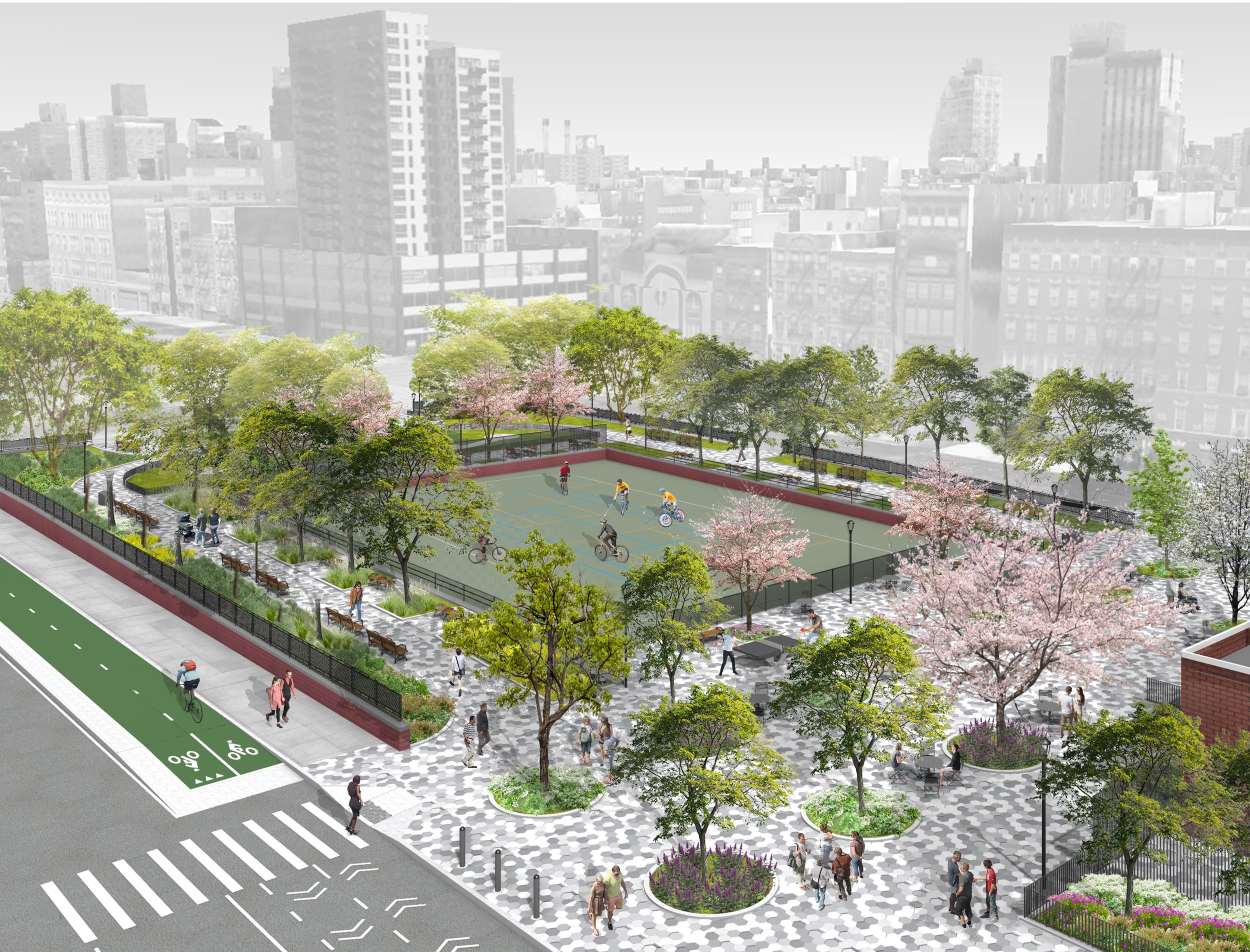Key Investments
Condition of City Facilities and Infrastructure
The city will not only make substantial investments to bring infrastructure and buildings to a state of good repair but also enhance asset monitoring to improve long-term maintenance planning. Capital investments will also promote energy efficiency, adopt modern design standards, and integrate innovative materials and construction techniques to anticipate future challenges and ensure the city’s long-term resilience. The city can better maintain and improve quality of life in all neighborhoods when infrastructure is durable, efficient, and built for the future.
Protecting New Yorkers through improvements and replacements
Through regular maintenance, the city extends the longevity of capital investments, ensures the safety of New Yorkers who depend on critical infrastructure, and provides the highest level of service. For example, over the next 10 years DOT is committing more than $17 billion toward repairs and replacements that will ensure the safety of its roughly 800 bridges and tunnels for decades to come. Key investments are also being made to DEP wastewater treatment facilities, including $151 million for reconstruction of primary tanks at the North River Wastewater Resource Recovery Facility (WRRF), $185 million for reconstruction of power distribution equipment at the Port Richmond WRRF to replace 30-year-old electrical and generator infrastructure, and $493 million to reconstruct sludge handling equipment at the Hunts Point WRRF.
This TYCS also includes targeted investments for New Yorkers who rely on city buildings for housing and their health. The Department of Homeless Services (DHS) will dedicate $707 million to upgrades and renovations across their network of shelters for homeless New Yorkers, as well as expand transitional housing through the Turning the Tide on Homelessness plan. To meet physical needs at NYCHA, the TYCS reflects $3.6 billion in city capital to address lead, mold, heating, elevator, and pest issues. Outside of this city allocation, NYCHA has committed $4.3 billion of their federal capital allocation in 2025 through 2029 towards portfolio-wide repairs.
Additionally, DOHMH is renovating neighborhood health center buildings. For example, improvements to the Corona Health Center include an Americans with Disabilities Act (ADA) accessible entrance and a new insulated roof to reduce the heat island effect. Other investments in the improvement and replacement of the city’s capital assets over the next ten years include $3.4 billion towards neighborhood park and playground reconstruction, $3.1 billion in hospital and health facility rehabilitation, and $3.1 billion in rehabilitation for libraries and cultural institutions, amongst many other items detailed in the Program Detail sections in the latter sections of this document.
DOHMH Bushwick Health Center Renovation
DDC is in the process of completing an exterior renovation of DOHMH’s Bushwick Health Center, an existing three-story, 19,500 square foot facility constructed in 1958, located in Brooklyn. Substantially completed in December 2024, this renovation includes the restoration of the brick façade, structural repair, roof replacement, exterior doors and windows replacement, and replacement of existing exterior ramp for ADA compliance.
The Bushwick Health Center is one of many similar facilities managed by DOHMH to provide services and programming to promote community health and well-being. The center also partners with outside providers to connect residents with primary care and social services. It is critical to both the present and future quality of life in New York City to ensure that facilities like the Bushwick Health Center, which provide such valuable resources for their communities, are kept in a state of good repair, ensuring that the highest quality of service can be delivered to New Yorkers.

- Images credit: Thornton Tomasetti
Let’s Swim NYC - Astoria Pool
Let’s Swim NYC is one of 10 strategic initiatives as part of NYC Parks’ Vital Parks for All plan to equitably strengthen the city’s health, environment, and communities through the city’s parks system. Vital Parks for All will focus investments in living infrastructure, including public parks, greenways, pools, playgrounds, wild areas, and recreation centers that host the civic life of the city and make communities healthier, safer, and more habitable.
As part of this initiative, Astoria Pool in Queens will reopen after an approximately $19 million reconstruction, with a brand-new pool shell, deck, and lighting; state-of-the-art filtration and chemical treatment systems; and upgraded heating, ventilation, and air conditioning (HVAC) systems and electrical equipment. Let’s Swim NYC overall is a $1 billion investment to reconstruct aging swimming infrastructure at 31 sites and expand swim equity with the construction of three new pools. This funding will mark the city’s highest period of investment in swimming infrastructure since the 1970s. The historic investment will expand safe water access throughout the five boroughs, promoting public safety and helping more New Yorkers learn life-saving water safety skills.

- Image credit: NYC Parks/Daniel Avila
Promoting energy efficiency
Investments by multiple agencies to reduce energy usage and emissions associated with city buildings have reduced inefficiencies and saved the city millions of dollars in annual energy costs. Over the next 10 years, the city will continue to make aggressive investments in more energy-efficient buildings and clean energy generation infrastructure.
The Department of Citywide Administrative Services (DCAS) serves as the hub for energy management for the city’s fixed asset portfolio and is responsible for purchasing the energy necessary to operate the city’s schools and community colleges, cultural institutions, libraries, offices, police precincts, fire houses, wastewater resource recovery facilities, and more. Since buildings and other facilities constitute close to 90% of municipal emissions, DCAS has committed to leading the way in emissions reductions and energy efficiency efforts. DCAS is working to meet near-term goals of energy and emission reductions and ensure that the city is on track to meet the longer-term goals of an 80% reduction in its emissions and carbon neutrality by 2050. Investments in these projects are expected to pay dividends in avoided energy costs, green job growth, enhanced social infrastructure, improved air quality and public health, and furthering environmental justice initiatives.
In addition to energy investments to DCAS managed city facilities, HPD is providing critical funds to enable existing buildings to upgrade and retrofit for energy efficiency in concert with housing preservation programs. NYCHA is also advancing electrification and energy retrofits in order to reach 80% reduction of greenhouse gas emissions by 2050 across its portfolio. Further, DCAS is also installing solar arrays on multiple city properties.
Leading the Charge - School Electrification
“Leading the Charge” is the city’s plan to combat climate change, create healthier learning environments, improve air quality in communities, and help develop the next generation’s green workforce. With this plan, the construction of all new city schools will be all-electric, and the city aims to complete or initiate the conversion of 100 existing schools to all-electric heating by 2030. The city has allocated $1.4 billion to SCA to start transitioning all existing NYC public schools to run on electricity.
Incorporating modern design standards
To meet long-term needs, the city is continuously improving the design of infrastructure by implementing new standards for resiliency, public health and accessibility. NYC agencies are adapting their own design practices and standards to promote efficiency. For example, DDC has implemented Office Master Specifications (OMS), a cloud- based digital specification writing platform to promote quality and efficient design of public buildings by reducing constructability challenges, streamlining building code compliance, reducing review time, and reducing the overuse of costly, non-standard materials.
Modernizing project and infrastructure design is not exclusively an exercise in design guidelines but also involves improvements to many phases of project development. To support efficient construction planning, DDC has launched several key tools that foster collaboration and innovation. Developed in coordination with OMB and the New York City Comptroller, the Expanded Work Allowance program allocates funding at the beginning of a project for certain types of change orders to ensure that construction can advance despite predictable changes. Many of DDC’s contracts now include early completion incentives to encourage contractor innovations in speeding up work and has incorporated cost adjustments to help contractors cope with price fluctuation without inflating bid prices. These tools together are expected to streamline the construction phase and are now being rolled out citywide.
Additionally, city investments in housing construction are required to meet modern design standards. In 2023, the HPD’s Office of Development’s Division of Building and Land Development Services updated the New Construction Design Guidelines to address the city’s climate goals through residential construction. HPD has also published parallel Preservation Design Guidelines that set standards for energy efficiency, resiliency, health, and safety for capital projects moving forward.
Modernizing facilities and equipment
Beyond maintaining existing assets in a state of good repair, the city continuously upgrades facilities and equipment to better serve New Yorkers. Keeping capital assets in good repair also presents an opportunity to meet the evolving needs of a growing and changing population. The city is also investing in mobility and safety improvements to ensure that roadways, parks, and cultural assets are accessible to all.
The TYCS allocates $305 million to NYCHA for comprehensive modernizations at Saint Nicholas Houses in Manhattan, Todt Hill Houses in Staten Island, and Gowanus Houses and Wyckoff Gardens in Brooklyn. This funding will address multiple building systems, remediate lead and asbestos, and perform in-unit upgrades including repairing or replacing bathrooms, kitchens, heating, elevators, windows, doors, and flooring. This approach will address interconnected building systems holistically, rather than merely replacing component parts.
Capital investments can be used to provide safer spaces in precincts and correction facilities for both victims and detainees by law enforcement. For example, the New York City Police Department (NYPD) Special Victims Division has developed a victim centric approach to sexual assault investigations, beginning when a survivor first encounters police to the end of an investigation. To meet this need, the city has invested in welcoming facilities, including dedicated waiting rooms and interview rooms to enhance privacy and minimize trauma. This is augmented with trauma-informed, empathy-based training for Division staff.
Rebuilding Sara D. Roosevelt Park
Sara D. Roosevelt Park is a central and heavily used gathering and recreation space in Lower Manhattan. Through a joint partnership between DOT and NYC Parks, the park will be modernized, to make the space more welcoming and accessible to all. Over the decades this park has been heavily utilized by the different immigrant communities as they made New York City their home, likely due to the lack of open space in this part of lower Manhattan. However, in the mid-20th Century , the park was diminished in favor of vehicular space. This project falls within DOT’s highest priority areas as identified in the NYC Streets Plan.
NYC Parks and DOT are now implementing a plan to enhance the park and remedy concerns regarding pedestrian access. The two agencies have developed a $30 million project that will better serve the surrounding community by offering renovated facilities, enhanced site furnishings, and improved accessibility into and within the park by modifying perimeter walls, building out new sidewalks and providing grade separated bikeways. As of April 2025, this project is near completing construction documentation for the design.

- Image credit: Perspective rendering of Broome St. Plaza and multipurpose area. Rendering created by Quennell Rothschild & Partners and provided by NYC Parks

- Image credit: Perspective rendering of soccer field and adult fitness. Rendering created by Quennell Rothschild & Partners and provided by NYC Parks
Vision Zero Great Streets: Reconstruction of the Grand Concourse
DOT’s Vision Zero Great Streets initiative targets dangerous outer borough arterials for capital safety improvements. Grand Concourse is a Vision Zero Priority Corridor that runs through the western Bronx’s historically underserved Fordham and Tremont Priority Investment Areas, and had roadways and medians in poor condition and lacking ADA-accessible pedestrian refuges. The city is continuing to invest in Grand Concourse through its reconstruction, which not only addresses state of good repair issues, but also introduces a suite of safety and streetscape improvements. These investments reflect the commitment to correct historical disinvestment and lingering state of good repair issues, while promoting modernization through sustainable modes of transportation and ensuring that all street users can travel through the area safely.
In 2023, DOT completed the fourth phase of the capital reconstruction of the Grand Concourse by constructing protected bicycle facilities, curb extensions, raised crosswalks, and median tip expansions along the Concourse between East 175th Street and Fordham Road. The capital project corrected state of good repair deficiencies through large scale reconstruction, introducing new pedestrian safety and accessibility features while also reconstructing or resurfacing the roadway as necessary. The project also constructed more than two miles of planted medians in this high-density community, beautifying the corridor, and complemented these improvements with city benches, bicycle racks, and signage to support community use of this street. In 2024, the city began construction on the fifth phase of the project to extend this transformational suite of safety and streetscape improvements from East Fordham Road to East 198th Street. DOT is also currently finalizing capital scoping of additional improvements to the Lower Concourse, which will introduce additional protected bicycle facilities, pedestrian safety improvements, and planted medians to the southern-most mile of the Concourse, between East 138th and East 163rd Street.

- Source: Street Smart
